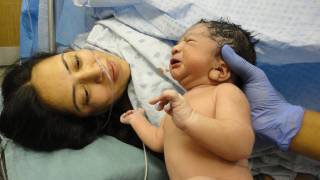Rotavirus Immunizations Expanding Globally

By the end of 2016, 42% of the World Health Organization (WHO) member states had introduced a rotavirus vaccine into their National Immunization Program.
As a result, hospitalizations and ER visits in these countries due to rotavirus were reduced by a median of 67%.
According to the WHO, the decision to introduce a new vaccine into countries is influenced by many factors, including local disease burden, vaccine efficacy and safety, and cost efficacy of the vaccines.
The rotavirus vaccine protects infants from the rotavirus illness that can cause severe diarrhea that is often paired often with vomiting, fever, and abdominal pain.
The rotavirus disease burden has been known for decades. Regional surveillance networks have informed countries about the high mortality associated with the disease in infants and young children under 5 years of age.
As an example, India introduced an locally produced vaccine because of high rotavirus mortality. Of India’s more than 2.3 million annual deaths among children, about 334,000 are attributable to diarrheal diseases.
A McKinsey & Co. network analysis mapped the complex relationships among the influencers of the decision-making process for new vaccine introduction. This McKinsey database showed that some high-income countries pay as little as US$33 per rotavirus vaccine course whereas others pay US$122.
Countries of all income levels need transparent mechanisms to reassure their decision-makers that the rotavirus vaccine can be purchased at prices that are both fair and sustainable.
There are 2 rotavirus vaccines licensed for use in infants in the United States:
- RotaTeq (RV5), which is given in three doses, one dose at ages 2 months, 4 months, and 6 months of age.
- Rotarix (RV1), which is given in two doses, one dose at 2 months and 4 months of age.
This first dose of the rotavirus vaccine should be given before a baby is 15 weeks of age. The vaccine should not be started for infants older than 15 weeks because there is not enough vaccine safety information for children who start the vaccine regimen when they are older than 15 weeks. Also, infants should receive all doses of the rotavirus vaccine before they turn 8 months of age.
Both vaccines are only given by putting drops in the baby’s mouth.
According to the CDC, both rotavirus vaccines (Rotarix® and RotaTeq®) were tested in large clinical trials that involved thousands of infants and were found to be safe and effective. About 9 out of 10 children who get the vaccine will be protected from a severe rotavirus illness.
Before a vaccine was available, many children who became ill with rotavirus were hospitalized. Currently, hospitalization is prevented in 94-96% of vaccinated children.
A vaccine, like any medicine, can have side effects. These are usually mild and go away on their own. Serious side effects are also possible but rare.
The CDC Vaccine Price Lists posted on this website provides the private sector vaccine prices for general information.
Our Trust Standards: Medical Advisory Committee
- Global Impact of Rotavirus Vaccination on Childhood Hospitalizations and Mortality from Diarrhea
- "Global Impact of Rotavirus Vaccination on Childhood Hospitalizations and Mortality from Diarrhea
- Rotavirus mortality in India: estimates based on a nationally representative survey of diarrhoeal deaths
- Rotavirus Vaccination: What Everyone Should Know


























